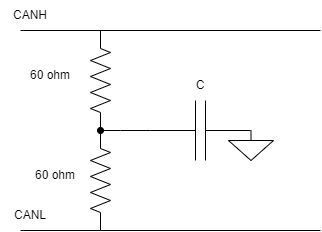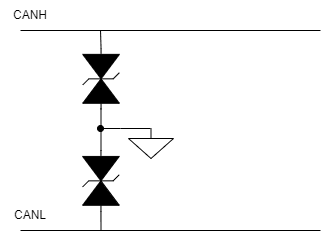CAN Transceiver Protection
Since an automotive failure can be costly, protection is essential. Learn how you can protect the CAN bus
An automotive vehicle is one of the noisiest environments for electronics to live in. As you drive your car, motorcycle, trycicle (no judgement), the mechanical structure necessary to support those adventures is no easy feat. For the electronics, the concerns are a bit different, but they exist and are deadly to overlook. Specifically, the energy transients involved in inductive load switching, the noise induced by the mere action of the ignition and even relay operation are immense! Not forgetting about short circuits. We all know what a pain they are to deal with.
The question is: do you want to risk millions in recalls to fix a problem caused by a CAN bus that could have been avoided by some cheap components? So I thought. Without going any further, let's take a look at how you can protect your bus.
Firstly, it's foolish not to think the CAN stransceivers themselves do not provide any protection. The compatible transceivers with the ISO 11898 norm (the standard for the CAN physical and data link layers) already provide some mechanisms to filter out noise, specifically, -3V to 32V short circuits and -150V to 100V voltage spikes. Also, the inherent signaling of CAN (you can learn more about how CAN works in our article CAN Protocol Overview (opens in a new tab)) works as a decent noise filter. Of course, even this is not enough to deal with the harsh conditions of the automotive environment.
So, let's take a look at the protection mechanisms and their purposes:
-
Shielded and twisted pair cables - this one is pretty obvious and simple. If your cable is shielded, the noise emitted by the environment around you will be reduced significatively, while twisting the CANH and CANL cables will minimize the noise going through the cables, by distributing the noise evenly by the cable pair and make it insignificant to the resulting differential signal. In sum, it protects external and internal noise. What are other options for noise filtering?
-
Filters - Another choice taken straight out of university classes. Good choices are low pass filters (RC, LC) and common mode choke filters, which you may have heard of this filter too. If not, it's also a filter for higher frequencies, blocking the noise that's common between the two lines, allowing lower frequency and DC to pass. This kind of noise is commonly radiated from unshielded motors and inverters, components commonly found in a vehicle. An added advantage is that common mode chokes increase the CMRR (Common Mode Rejection Ratio), providing high impedance for the common mode signal, when the voltages are the same (recessive state) and low impedance when the bus is dominant. As for hardware, they are simply a pair of coils. The signals travel in the same direction (red), so that the magnetic flux (blue) adds and creates an opposing field, blocking the noise.

How common mode choke works
- Split bus termination - now, to our last noise filtering scheme, split termination. Remember the 120ohm resistors we mentioned on the previous article, that are needed to prevent signal reflection, which play their part in avoiding interference. This option is an upgrade to the termination resistors, where we divide the resistor into 2 smaller 60ohm resistors, and add a capacitor in the middle of them, connected to ground. This will create some extra filtering than the single resistor. But, what about high voltage transients and short circuits?

CAN split bus termination circuit
-
Metal Oxide Varistor (MOV) - Varistors are non-linear resistors that vary with voltage and protect your circuits against higher voltages through clamping. They connect with the bus and the ground, and provide high resistance at lower voltages and low resistance at higher voltages, exaclty what you need. They also turn on in the nanosecond order, which is perfect. Probably part of the reason why they're commonly found in electronic home appliances. The two main caveats are their high leakage current and high shunt capacitance on each bus line, creating distortions on the CAN bus.
-
Transient voltage supressor (TVS) - TVS is another way to prevent high voltages from entering your ECU from the CAN bus, which have less leakage current than the MOV's mentioned earlier. These work as avalanche diodes, which are triggered by high voltages to shunt them into safe levels for the transceiver. With also very fast turn on times, their advantage over the MOV's make them "transparent" to the CAN bus, until they are needed.

Transient voltage suppressor
Now, that you know how to protect the CAN bus, all you need is to learn about the COM stack, which will come soon to the website. Make sure to tune into the website, by subscribing to our weekly mailing list. And don't forget to combine all the circuits you learned today!
© AutosarToday —@LinkedIn